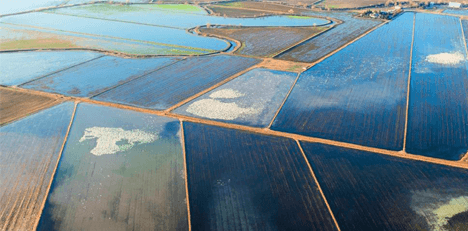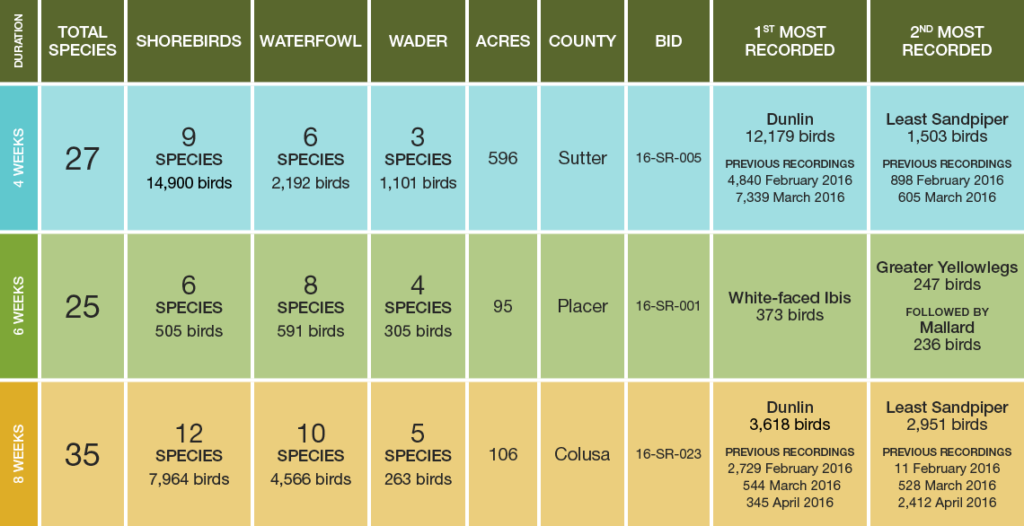REPORT FROM THE NATURE CONSERVANCY’S BIRDRETURNS PROGRAM

The Nature Conservancy is grateful for the California Ricelands Waterbird Foundation’s support of the BirdReturns program, which created approximately 800 acres of additional habitat in spring 2016. Together with the Rice Commission’s significant role in designing and carrying out the program over the last three years, the Conservancy counts the rice industry as its most important implementation partner.
The Foundation’s investments funded additional contracts with rice farmers to provide habitat by extending waterbirdfriendly management practices several weeks past the end of hunting season. The investment capitalized on a time of year when modest changes to field management can provide huge benefits, especially for shorebirds which are found in rice country long after most waterfowl have left the area.

Similar to practices implemented in NRCS’ WHEP program, growers were required to manage post-harvest vegetation and straw to achieve minimal standing stubble and matted vegetation, and to till fields to expose bare soil and incorporate remaining vegetation into the soil. Participants were also required to achieve depths of less than 4 inches of water on their fields by February 1, 2016, and maintain shallow depths throughout the contract period, with depths of 1-3 inches and mudflat-like conditions preferred. The Foundation’s support funded 3 of the 12 contracts that were part of the Regional Conservation Partnership Program (RCPP). Thus, the Foundation successfully leveraged their investment by securing 1-to-1 matching NRCS funds via RCPP. The contracts represent a nice mix between short- and long-term contracts, providing a large block of habitat immediately after hunting season, plus two smaller blocks of habitat, which were maintained into March, a time when shorebird habitat is typically scarce.
BENEFITS TO BIRDS

The Foundation’s investment primarily benefited shorebirds utilizing additional BirdReturns habitat during the late winter, when shorebirds are abundant in rice country and there is relatively scarce suitable habitat. Target species include the long-billed dowitcher, least sandpiper, dunlin, greater yellowlegs, curlew, plover, black-necked stilts, white-faced ibis, and American avocet. Other species benefiting from BirdReturns habitat include greater and lesser sandhill crane and numerous goose and duck species. Since the beginning of BirdReturns in 2014, Conservancy scientists have conducted over 7,000 bird counts on BirdReturns fields, and counted nearly 1 million birds during that time.
We monitored bird response at the three bids during the enrolled weeks, and following the enrolled treatment period for as long as water or bird presence was recorded. The chart below illustrates the data recorded during the surveys.
BIRDRETURNS HABITAT SURVEY RESULTS

